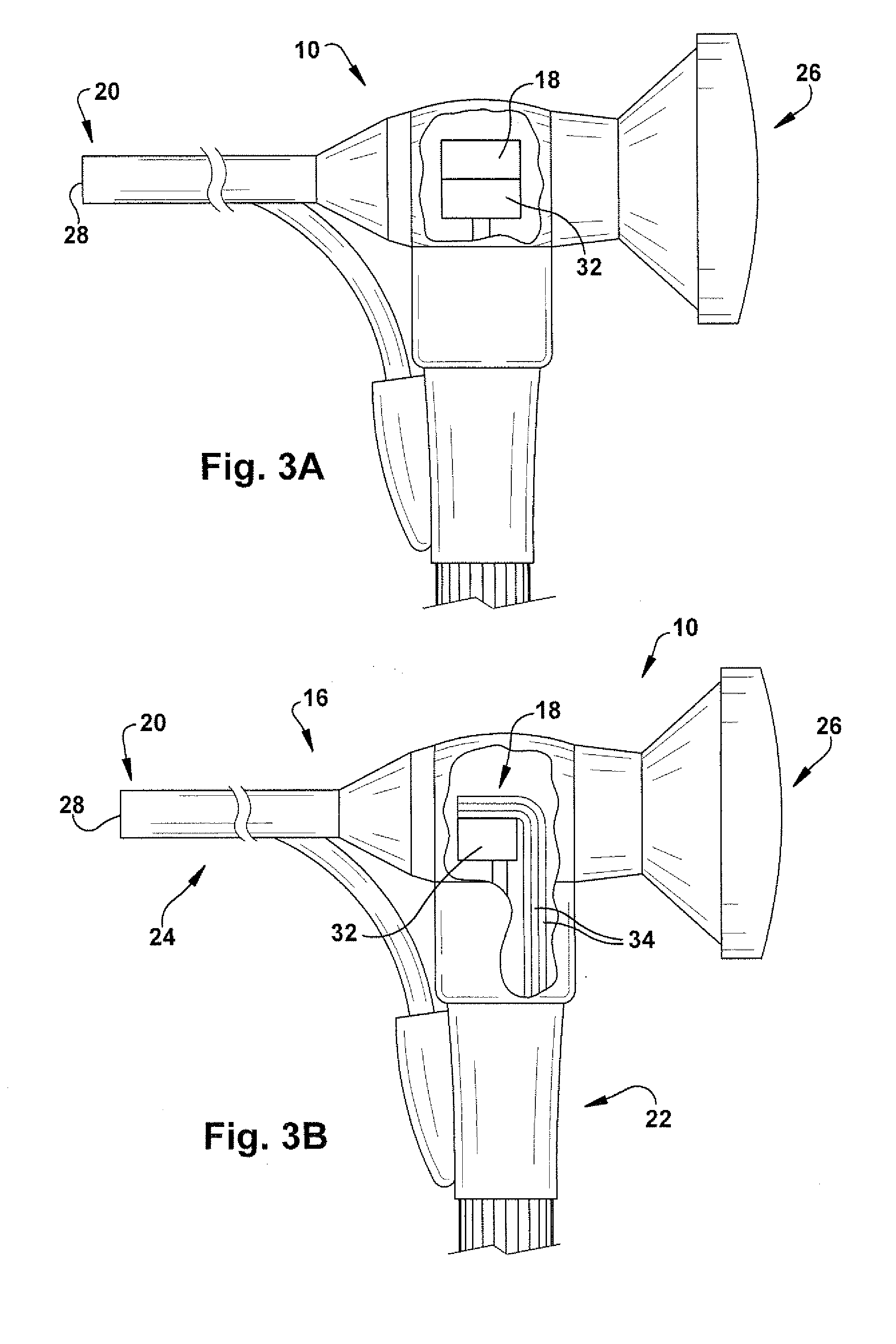Device and method for determining the presence of middle ear fluid
a technology of fluid in the middle ear and a device, applied in the field of otolaryngology, can solve the problems of otitis media (ear infection, ome, hearing loss, etc.) and recurrent ear infections that often follow
- Summary
- Abstract
- Description
- Claims
- Application Information
AI Technical Summary
Benefits of technology
Problems solved by technology
Method used
Image
Examples
example
Device Design
[0051]Initial device design centered on the addition of a laser diode module and mount to an existing open otoscope (Welch Allyn, Skaneateles Falls, N.Y.). For the purpose of the present invention, an open otoscope easily allows positioning and adjustment of a tightly focused beam. A simple mount was built and attached to the otoscope near the light source to secure the laser diode module.
[0052]This design allowed convenient replacement of the laser diode module so that different wavelengths (colors) may be tested on the same prototype. Also, the mount allowed accurate and stable positioning of the laser diode module so that the beam could be aimed through the opening of the speculum and illuminate onto the tympanic membrane surface. For purposes of this prototype, the laser diode module was attached to the mount by double-sided tape, and power was achieved via an external battery source. Power for the otoscope incandescent bulb was from a separate power supply built in...
PUM
 Login to View More
Login to View More Abstract
Description
Claims
Application Information
 Login to View More
Login to View More - R&D
- Intellectual Property
- Life Sciences
- Materials
- Tech Scout
- Unparalleled Data Quality
- Higher Quality Content
- 60% Fewer Hallucinations
Browse by: Latest US Patents, China's latest patents, Technical Efficacy Thesaurus, Application Domain, Technology Topic, Popular Technical Reports.
© 2025 PatSnap. All rights reserved.Legal|Privacy policy|Modern Slavery Act Transparency Statement|Sitemap|About US| Contact US: help@patsnap.com



